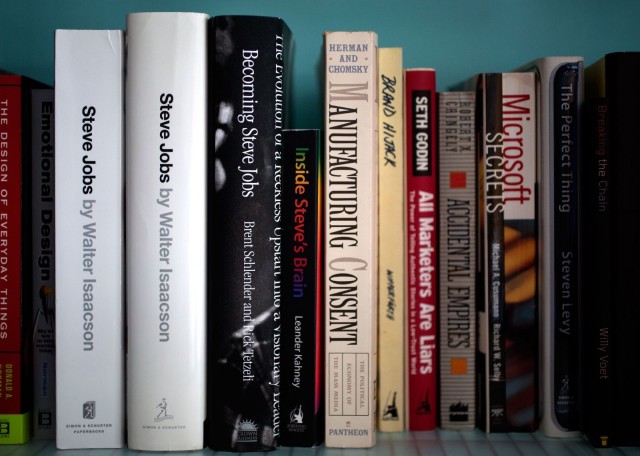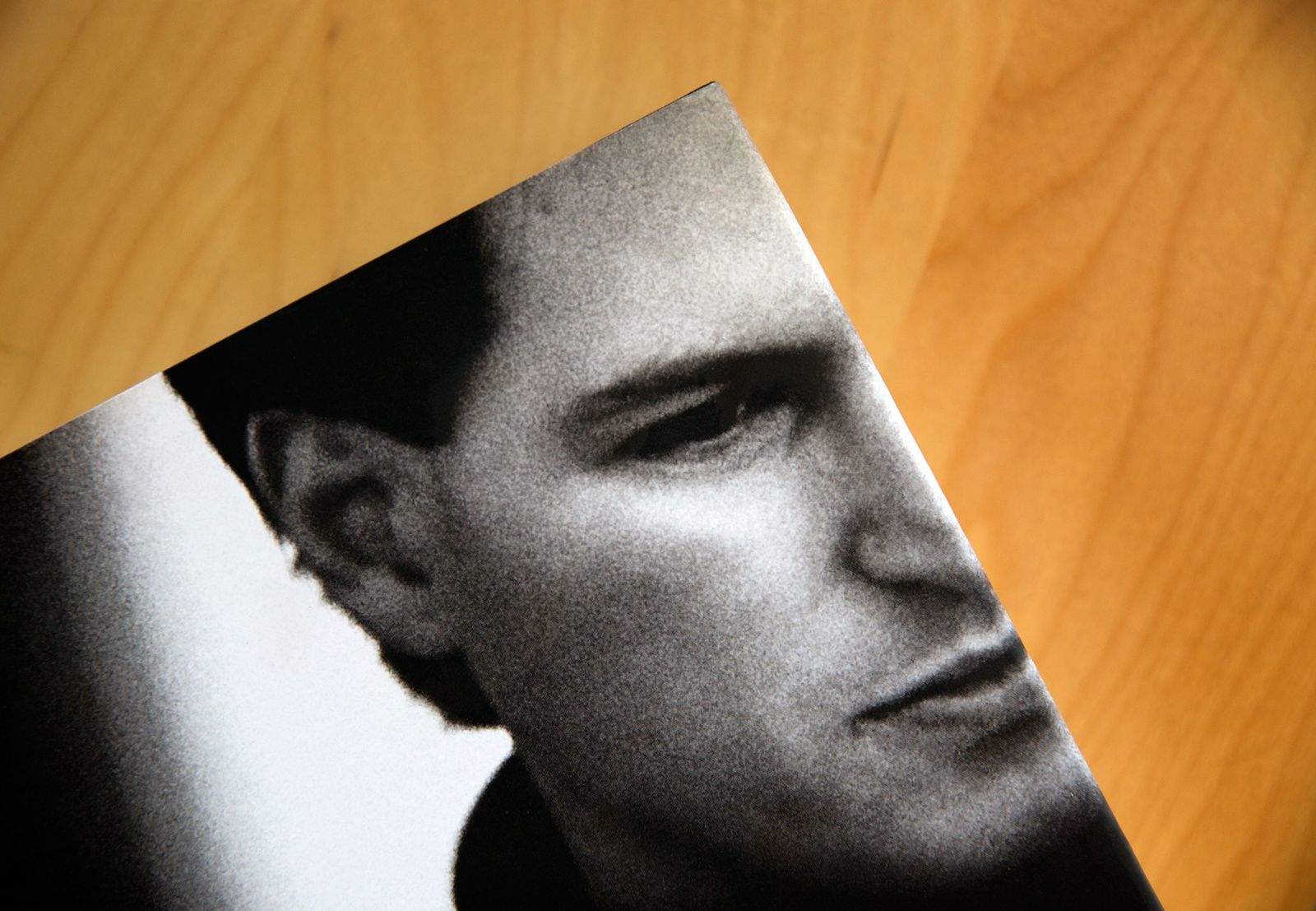One of Steve Jobs’ favorite recordings was The Beatles working on version after version of “Strawberry Fields Forever.”
The new Jobs biography, Becoming Steve Jobs, is like that recording: It serves up fresh takes on oft-told stories from Apple’s history, this time with more sugarcoating.
This post contains affiliate links. Cult of Mac may earn a commission when you use our links to buy items.
I enjoyed the book, which was written by Brent Schlender and Rick Tetzeli, a pair of long-time writers for business magazines. It’s slick and fast-moving. At times it’s glib, in that familiar business mag way, but its stories are briskly told and the book rarely gets bogged down.
I was impressed with its professionalism. The authors frequently find new ways to recount anecdotes that Apple fans have heard dozens of times before. That alone is no mean feat, but it’s akin to hearing a chorus sung with a slightly different harmony.
The meat of the book is Jobs’ “wilderness years,” the decade he spent exiled from Apple, working at NeXT and Pixar. It coincides with the two decades Schlender spent covering Jobs for The Wall Street Journal and Fortune. It’s based on dozens of interviews and encounters, on and off the record, during that time. Schlender and Jobs became “friends,” in a weird reporter/subject kind of way, and the best parts of the book concern their friends-but-not-really relationship.
Becoming Steve Jobs is pretty brutal about the early days at Apple, when Jobs wreaked havoc and terror while driving projects like the Apple III into the ground. His management incompetence continued at NeXT and Pixar, and the book mercilessly catalogs all his failures, mistakes and dreadful behavior.
At worst, Jobs was indecisive and incompetent. At best, he was incredibly lucky to work with people like Pixar’s Ed Catmull, who kept him at arm’s length so he couldn’t screw up the animation studio.
Lessons from Steve Jobs’ failures?
This sets up the second half of the book, where we are supposed to learn how Jobs’ earlier failures taught him important management techniques that he puts to use resurrecting Apple.
Unfortunately, the book is light on these details.
We never really learn exactly what Jobs did to put Apple back on the path to success. How Jobs became a better manager, businessperson and all-round human being during his exile isn’t really addressed, although the book claims over and over to do so.
Much has been made of the authors’ access to Apple’s top brass. For the first time, we get on-the-record interviews with Apple executives like Cue, Tim Cook and Jony Ive, as well as Pixar’s Catmull and John Lasseter, Disney chief Bob Iger and NeXT old-timers like Susan Barnes, Mike Slade and Jon Rubinstein (who’s actually talked several times before).
While it’s great to get these folks on the record, it doesn’t add up to much, with the exception of one explosive revelation that Cook was willing to donate part of his liver to his dying boss. There are a couple of new stories and quotes about Apple, but not much. There’s little detail about how Apple’s products were developed — the processes and problems, the setbacks and solutions.
What we get, mostly, are testimonials from former colleagues that, yeah, Jobs could be a bastard, but it was never personal — and it was all for the sake of the company or the products. Every chapter contains long sections where former colleagues proclaim that Jobs had matured or changed or learned this lesson or that, but it doesn’t show how. These declarations are then followed by more examples of Jobs’ callous, imperious behavior.

Photo: Jim Merithew/Cult of Mac
Giving short shrift to Jony Ive
To take one example, Becoming Steve Jobs declares that Jobs’ most important creative relationship was with Jony Ive. But again, it tells instead of shows.
In fact, the description of Ive and his contributions is a huge disappointment. I don’t want this to sound too self-serving, because of my own book about Ive, but I was really disheartened by the coverage of the designer, whose industrial design department was — and is — Apple’s main idea factory.
Schlender and Tetzeli start by saying Ive was an admirer of Braun designer Dieter Rams, a glib cliche that’s become an internet meme. But after listing Ram’s “Ten Principles of Good Design,” they leave it at that.
I was a bit shocked. It’s the kind of thing you’d expect in a high school term paper, not a “definitive” account. After that, there’s a passage toward the end of the book where Ive describes — in his maddeningly abstract way — his relationship with Jobs, but again, little specific is divulged.
In the entire book, there’s no fresh insight into how Jobs, Ive and many others turned Apple into the world’s most devastating design-led corporation.
Becoming Steve Jobs suffers from the same problem as Walter Isaacson’s Jobs biography and many other accounts — we hear only from a small number of executives, and they focus on Jobs’ personal life, not his professional one. Few have detailed exactly how he ran Apple or how the company came up with the iPod, iPhone and iPad.
Most of the products in Jobs’ long career are covered in a page or two, and in almost no detail.
Unfortunately, this is stuff Apple considers an industrial trade secret. It’s a big part of how the company is so successful, and not the kind of information Apple wants divulged. I have been explicitly told this by several former Apple executives and staffers. Samsung may be able to copy Cupertino’s gadgets, but Apple doesn’t want the Korean company copying its internal processes.
This is why the interviews with Apple’s executives in Becoming Steve Jobs are disappointing. Despite claims that Apple has become more open after Jobs’ death, the company is still not talking about the interesting stuff. Much of this has been documented by Joel Podolny’s internal Apple U project but remains top secret. Perhaps one day Podolny will publish these case studies — he’s an academic, after all — but until then, what is perhaps the definitive account is hidden from the public.
Becoming Steve Jobs is too Steve-centric
And that’s the problem: Becoming Steve Jobs offers the same Steve-centric view of Apple we’ve gotten so many times before.
There’s an illustrative quote from Bill Gates toward the end that explains the problem with focusing only on the executive view: “Steve and I will always get more credit than we deserve, because otherwise the story’s too complicated,” Gates says.
In my opinion, that’s not necessarily true. Some of the best stories published about Apple come straight from the rank and file. Take Andy Hertzfeld’s Revolution in the Valley, taken from his online Folklore project. It digs into the Macintosh project, as told by the engineers that built that revolutionary computer. In my opinion, the “definitive” book about Jobs would be one that concentrated on his professional life, and blended the Steve-centric view with those of the many people who worked with him at Apple and elsewhere.
For instance, Jobs has a reputation for being decisive — fearsomely so — but in fact, in many cases he was not. A close colleague describes him like this in Becoming Steve Jobs: “People want to paint him as Michelangelo, you know,” former NeXT colleague Mike Slade says. “But he was a real nervous Nelly, like an old-fashioned, tiny, old, small businessman saying, ‘Shall I cut another nickel off it?’ Like a junk merchant.”
It’s the book’s most surprising quote, completely at odds with Jobs’ public image. But Jobs was indecisive, sometimes cripplingly so. He was so unsure about the furniture in his house, it remained famously unfurnished. He even dithered about how to treat the cancer that tragically took his life. In fact, Jobs’ indecisiveness is rich territory to explore. But it’s counter to his image and reputation, so it is left alone in this biography.
I wouldn’t argue that Jobs is a much more complex character than he’s been portrayed in previous books, but his obvious talents and contributions aren’t spelled out in Becoming Steve Jobs. Despite the publisher’s claims, this isn’t the book that throws light on how Jobs operated. It just says it is.
While it’s not really fair to criticize authors for the book they didn’t write, Becoming Steve Jobs suffers from the same problem as Isaacson’s biography and many other accounts — it focuses on Jobs’ personal life, not his professional one.
And we’ve heard that tune before.



